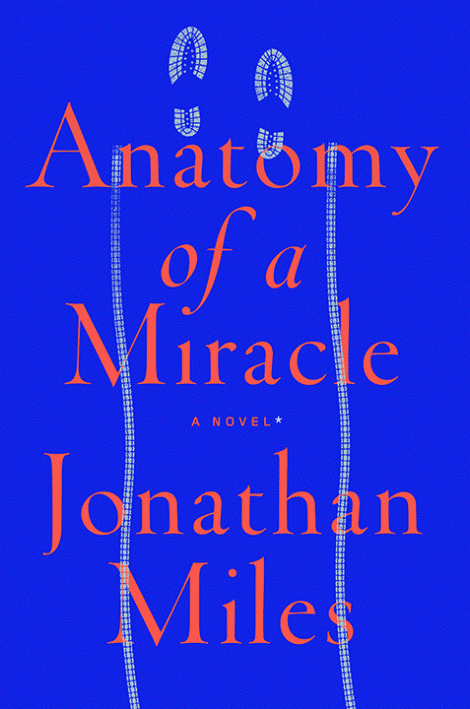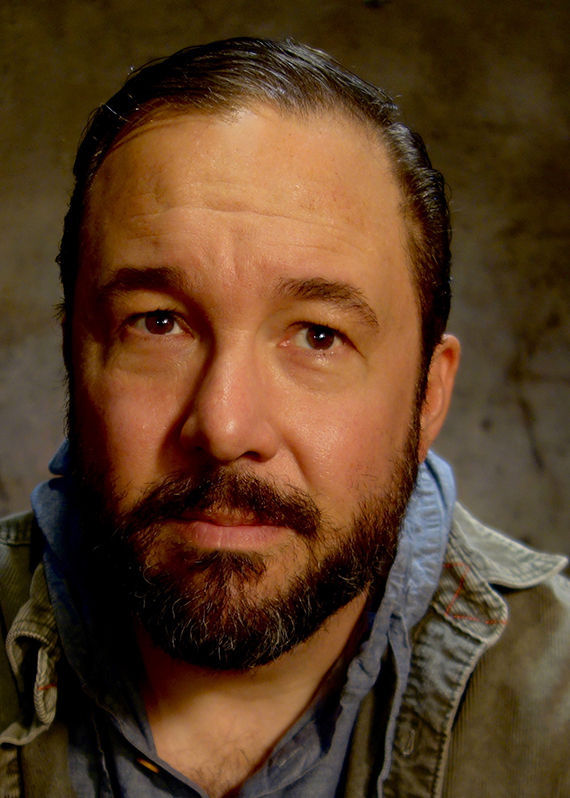
ANATOMY OF A MIRACLE
A profound new novel about a paralyzed young man’s unexplainable recovery—a stunning exploration of faith, science, mystery, and the meaning of life.
Rendered paraplegic after a traumatic event four years ago, Cameron Harris has been living his new existence alongside his sister, Tanya, in their battered Biloxi, Mississippi neighborhood where only half the houses made it through Katrina. One stiflingly hot August afternoon, as Cameron sits waiting for Tanya during their daily run to the Biz-E-Bee convenience store, he suddenly and inexplicably rises up and out of his wheelchair.
In the aftermath of this “miracle,” Cameron finds himself a celebrity at the center of a contentious debate about what’s taken place.
A profound new novel about a paralyzed young man’s unexplainable recovery—a stunning exploration of faith, science, mystery, and the meaning of life.
Rendered paraplegic after a traumatic event four years ago, Cameron Harris has been living his new existence alongside his sister, Tanya, in their battered Biloxi, Mississippi neighborhood where only half the houses made it through Katrina. One stiflingly hot August afternoon, as Cameron sits waiting for Tanya during their daily run to the Biz-E-Bee convenience store, he suddenly and inexplicably rises up and out of his wheelchair.
In the aftermath of this “miracle,” Cameron finds himself a celebrity at the center of a contentious debate about what’s taken place. And when scientists, journalists, and a Vatican investigator start digging, Cameron’s deepest secrets—the key to his injury, to his identity, and, in some eyes, to the nature of his recovery—become increasingly endangered. Was Cameron’s recovery a genuine miracle, or a medical breakthrough? And, finding himself transformed into a symbol, how can he hope to retain his humanity?
Brilliantly written as closely observed journalistic reportage and filtered through a wide lens that encompasses the vibrant characters affected by Cameron’s story, Anatomy of a Miracle will be read, championed, and celebrated as a powerful story of our time, and the work of a true literary master.
- Hogarth
- Hardcover
- March 2018
- 368 Pages
- 9780553447583
About Jonathan Miles
 Jonathan Miles is the author of the novels Dear American Airlines and Want Not, both New York Times Notable Books. He is a former columnist for the New York Times, has served as a Contributing Editor to magazines ranging from Details to Field & Stream, and his journalism has been frequently anthologized in Best American Sports Writing and Best American Crime Writing. He is also the author of a book on fish and game cookery, The Wild Chef, and competed in the Dakar Rally, an off-road race through Africa.
Jonathan Miles is the author of the novels Dear American Airlines and Want Not, both New York Times Notable Books. He is a former columnist for the New York Times, has served as a Contributing Editor to magazines ranging from Details to Field & Stream, and his journalism has been frequently anthologized in Best American Sports Writing and Best American Crime Writing. He is also the author of a book on fish and game cookery, The Wild Chef, and competed in the Dakar Rally, an off-road race through Africa.
Praise
“A remarkable combination of medical mystery, satire and war story. Like Ben Fountain’s Billy Lynn’s Long Halftime Walk, it captures the long-lasting effects of war by focusing on those for whom war is only a tangential thing somewhere far away.”—Shelf Awareness
“Miles’s powerful prose nudges readers to seek the soft spots between faith and judgement, story and science, and fact and fiction.”—CJ Lotz, Garden & Gun
“Anatomy of a Miracle by Jonathan Miles is a novel that reads like a true story. It’s about a US veteran whose paralysis from the War in Afghanistan is miraculously cured. Cue a media frenzy and you finishing this story in days.”—TheSkimm
Discussion Questions
1. Anatomy of a Miracle opens as Tanya wheels her brother, Cameron, to their local convenience store, the Biz-E-Bee. This site is important to much of the novel’s action, being the scene of the seemingly miraculous moment when Cameron, formerly paralyzed from the waist down, steps out of his wheelchair and onto the asphalt of the store’s parking lot. What kind of atmosphere does this scene evoke? How does the routine of Tanya and Cameron’s daily errands speak to the circumstances of their life? Is it indicative of small-town life in the Deep South?
2. Jonathan Miles’s novel is set years after Hurricane Katrina, though Biloxi, Mississippi, is still defined by the storm. Where do you see Katrina’s lasting effects on the town?
3. What were your first impressions of Cameron and Tanya and of their brother/sister relationship? Early on, their home in Biloxi is described as “starkly devoid of family history,“ swept away with their possessions by the hurricane. Did your opinion of the characters develop as you gained insight to their backstories?
4. What do you make of the internet and social media’s role in the novel? Does it reflect things that you see on Facebook and Twitter?
5. What do you think of Cameron’s doctor, Janice? Is her confidence in science similar or different from the faith that other characters have in religion?
6. In the story, there is controversy about what constitutes a miracle. How would you define a miracle? Can one at once believe in miracles and doubt the existence of God?
7. Cameron struggles with feelings of guilt and unworthiness. Why do you think he feels this way?
8. How did you feel about the way people tried to capitalize on Cameron’s recovery? Think of the Biz-E-Bee’s conversion to a site of public pilgrimage with its own line of spiritual novelties for sale, or the reality television show, Miracle Man. Do you agree or disagree with attempts to make money off of Cameron’s life?
9. How do Cameron and Darmarkus react to postwar life and adapt to their injured bodies? Cameron agonizes over life’s what-ifs while Damarkus settles with what is. Does Damarkus exhibit acceptance for what happened? Does Cameron?
10. How did you react to the revelation about Cameron’s sexuality? Discuss the implications that this had for the public’s perception of Cameron. In light of this, why did many choose to denounce his recovery as a sign of divine intervention?
11. As an adolescent, Cameron recognizes that he is attracted to boys and not girls, but does not identify as “gay” because of the negative perceptions at his school and in popular culture. What do you think this struggle might have been like for him?
12. Tanya believes that a cocktail of antidepressants, sleeping aids, and anti-anxiety medication saved her brother’s life following his return from Afghanistan. How does this compare to the Cameron’s self-medication with alcohol and nonprescription drugs? Why are Tanya and Janice concerned when Cameron stops taking his medication?
13. What do you think of the reported style of the novel? How do you think the blend of fact and fiction reflects current cultural preoccupations with truth?
14. Honeybun chastises Griffin for wanting to represent Cameron’s recovery as a metaphor for self-acceptance. Did you read the “miracle” as a metaphor?
15. The last figure that we witness visiting the Biz-E-Bee tells Quŷnh that he prays for “love and understanding.” How do you think this message applies to the story overall?
16. Toward the novel’s end, Janice’s father, Winston Lorimar discusses science and religion with his daughter, arguing that storytelling is a way of understanding the world whether or not you believe in God. Do you agree with him?
17. Having finished reading the novel, do you think it “really matters” whether or not Cameron’s recovery was a miracle?
